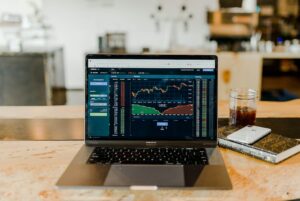Forex trading can be a complex and unpredictable market. Traders are constantly looking for ways to gain an edge and increase their chances of success. One way to achieve this is by using forex leading indicators in your trading strategy.
Forex leading indicators are tools that help traders identify potential market trends before they occur. These indicators are based on historical price data and mathematical calculations, and they provide traders with valuable information about the future direction of a currency pair.
There are several types of forex leading indicators, each with its own unique characteristics and benefits. In this article, we will discuss some of the most commonly used indicators and how you can incorporate them into your trading strategy.
1. Moving Averages:
Moving averages are one of the simplest and most widely used forex leading indicators. They are calculated by adding up the closing prices of a currency pair over a certain period and dividing it by the number of periods.
Moving averages can help traders identify trends and determine the overall direction of the market. They can also act as support or resistance levels, indicating potential entry or exit points.
There are different types of moving averages, such as the simple moving average (SMA) and the exponential moving average (EMA). The SMA gives equal weight to each period, while the EMA gives more weight to recent prices.
2. Relative Strength Index (RSI):
The RSI is a momentum oscillator that measures the speed and change of price movements. It oscillates between 0 and 100 and is typically used to identify overbought and oversold conditions in the market.
When the RSI is above 70, it indicates that the market is overbought and a reversal may be imminent. Conversely, when the RSI is below 30, it suggests that the market is oversold and a potential buying opportunity may arise.
Traders can use the RSI as a confirmation tool to validate their trading decisions. For example, if a currency pair is in an uptrend and the RSI is above 70, it may be a signal to sell or take profits.
3. Bollinger Bands:
Bollinger Bands are volatility indicators that consist of a moving average, an upper band, and a lower band. The upper and lower bands are calculated based on the standard deviation of price movements.
Bollinger Bands can help traders identify periods of low volatility, which are often followed by periods of high volatility. When the bands contract, it suggests that the market is consolidating, and a breakout may be imminent.
Traders can use Bollinger Bands to identify potential entry or exit points. For example, when the price touches the lower band, it may be a signal to buy, while when it touches the upper band, it may be a signal to sell.
4. Fibonacci Retracement:
Fibonacci retracement is a technical analysis tool that is based on the Fibonacci sequence. It is used to identify potential support and resistance levels in the market.
The Fibonacci retracement levels are calculated by taking the high and low points of a currency pair and dividing the vertical distance by the Fibonacci ratios (23.6%, 38.2%, 50%, 61.8%, and 100%).
Traders can use Fibonacci retracement levels to determine potential entry or exit points. For example, if a currency pair is in an uptrend and retraces to the 61.8% level, it may be a signal to buy.
In conclusion, forex leading indicators can be valuable tools in your trading strategy. They can help you identify potential market trends and make informed trading decisions. However, it is important to remember that no indicator is foolproof, and they should be used in conjunction with other technical analysis tools and fundamental analysis. It is also crucial to practice proper risk management and use stop-loss orders to protect your capital.






